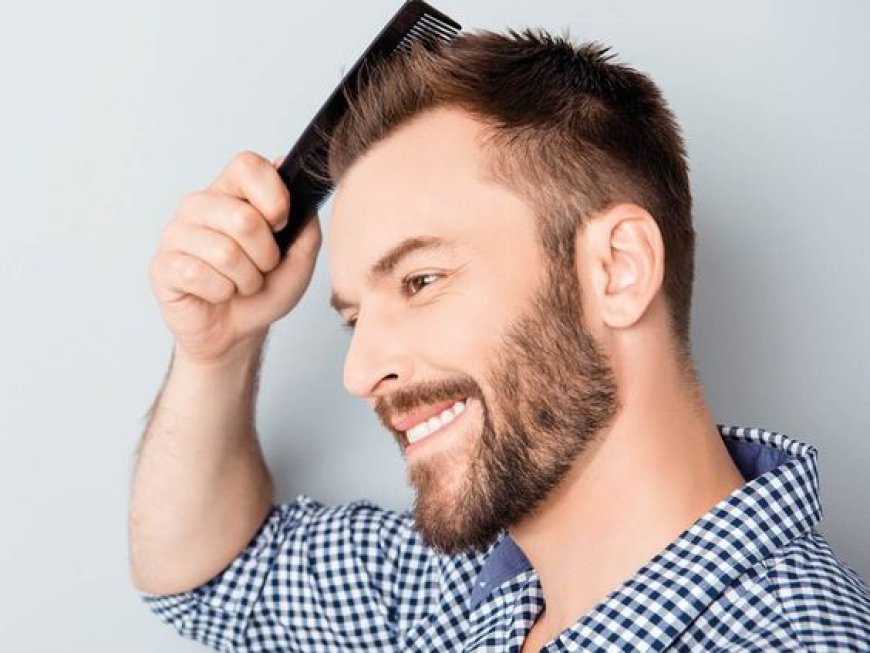Hair Revival Starts with Finasteride for Hair Loss

Hair loss is a common concern that affects millions of people worldwide. Whether due to genetics, hormonal changes, stress, or medical conditions, losing hair can be distressing and impact one's self-esteem. However, advancements in medical science have led to effective treatments for hair loss, Finasteride for Hair Loss in Dubai as a leading option. This article will explore how Finasteride works, its benefits, and why it could be the ideal solution for those looking to revive their hair.
Understanding Finasteride
Finasteride is an oral medication that was initially developed to treat benign prostatic hyperplasia (BPH), a condition characterized by an enlarged prostate. However, its ability to inhibit the conversion of testosterone to dihydrotestosterone (DHT), a hormone linked to hair loss, led to its approval for treating male pattern baldness. By reducing DHT levels in the scalp, Finasteride helps prevent further hair loss and may even promote regrowth in individuals affected by androgenetic alopecia, the most common form of hair loss.
The Mechanism Behind Hair Loss
To comprehend how Finasteride aids in hair revival, it is essential to understand the role of DHT in hair loss. DHT is a derivative of testosterone and plays a significant role in the development of male characteristics. However, in genetically predisposed individuals, DHT can shrink hair follicles, leading to thinning hair and eventual baldness. By blocking the enzyme 5-alpha reductase, Finasteride significantly reduces the levels of DHT in the scalp, thereby minimizing its harmful effects on hair follicles.
Benefits of Finasteride for Hair Loss
-
Proven Effectiveness: Numerous clinical studies have demonstrated the efficacy of Finasteride in promoting hair regrowth and preventing further hair loss. Many men who use Finasteride report noticeable improvements within a few months of starting the treatment.
-
Easy to Use: Finasteride is available in pill form, making it easy to incorporate into your daily routine. Unlike topical treatments, which can be messy and require precise application, taking a pill is straightforward and hassle-free.
-
Long-Term Results: Continuous use of Finasteride can lead to sustained hair regrowth and stabilization of hair loss. Many users experience long-lasting results as long as they adhere to the prescribed regimen.
-
Minimal Side Effects: While all medications come with potential side effects, the majority of users tolerate Finasteride well. Common side effects may include mild sexual dysfunction, which often resolves after discontinuation or adjustment of dosage.
-
No Need for Surgery: For those who wish to avoid invasive procedures like hair transplants, Finasteride offers a non-surgical alternative that can effectively combat hair loss and promote regrowth.
Who Can Benefit from Finasteride?
Finasteride is primarily recommended for men experiencing male pattern baldness, particularly those with mild to moderate hair loss. While some studies have explored its use in women, it is generally not prescribed for females due to potential hormonal side effects and safety concerns during pregnancy. It is essential to consult a healthcare professional before starting any treatment, as they can provide personalized recommendations based on individual health needs and conditions.
How to Use Finasteride Effectively
For optimal results, it is crucial to use Finasteride as directed by a healthcare provider. Typically, the recommended dosage is one 1 mg tablet taken daily. Consistency is key; taking Finasteride at the same time each day can help establish a routine and maximize effectiveness. While some users may begin to see improvements within three to six months, it is essential to maintain realistic expectations and understand that full results may take up to a year.
Combining Finasteride with Other Treatments
While Finasteride is highly effective on its own, many individuals choose to combine it with other hair loss treatments for enhanced results. Minoxidil, a topical solution, is a popular option that can be used alongside Finasteride. While Finasteride addresses hormonal factors, Minoxidil works by improving blood flow to the hair follicles, promoting hair growth. Combining these treatments can provide a comprehensive approach to hair restoration, maximizing the potential for successful outcomes.
Addressing Concerns and Myths
Despite its proven efficacy, there are several misconceptions surrounding Finasteride that can deter individuals from considering it as a treatment option. One common myth is that Finasteride causes significant weight gain or breast enlargement. In reality, these side effects are rare and often exaggerated. Most users do not experience severe side effects, and any mild effects typically resolve after discontinuation.
Another concern is the notion that stopping Finasteride will lead to rapid hair loss. While it is true that discontinuing treatment may result in the loss of newly grown hair, the hair that was retained during treatment will not be lost instantly. It’s important to discuss any concerns with a healthcare professional who can provide guidance based on individual experiences.
Conclusion
Hair revival is achievable, and Finasteride for hair loss represents a beacon of hope for many facing the challenge of hair loss. With its ability to effectively reduce DHT levels and promote regrowth, Finasteride offers a scientifically-backed solution that can transform lives. For individuals experiencing hair loss, consulting with a healthcare provider can be the first step toward a more confident and revitalized self. By understanding the benefits and mechanisms of Finasteride, you can make informed choices about your hair restoration journey. Start today and take control of your hair loss with Finasteride – a trusted ally in the quest for fuller, healthier hair.

 laiba5656
laiba5656